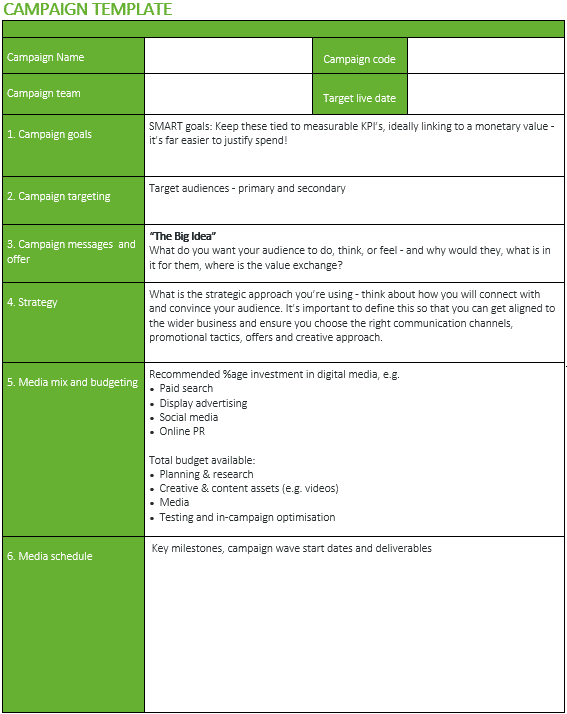Six Steps to Develop a Digital Marketing Campaign
Marketing campaigns always include a message or offering that is new and creative. However, campaigns often don’t pay off without defining and describing the right elements of which they consist. Smart Insights has a hands-on template ready for marketeers to create a campaign from scratch. This template aims to provide feasibility and integration of the six elements a campaign should have. Nonetheless, campaigns are less effective without being a part of a Digital Marketing strategy where all elements have a clear foundation. Let’s dive into each of these steps.
Marketing Campaign Goals
First, define what you want to achieve. Digital marketing campaigns are highly effective methods that serve to accelerate achievements of objectives that are included in the baseline of a strategy. Don’t forget to include KPI’s to keep track of the performance of the campaign after launching it.
One of the best Digital Marketing Campaigns of 2019 was Calvin Klein teaming up with celebrities on Social media to ‘Tell their story’ – and here it comes: with an objective to stimulate conversations. This worked out well, helping Shawn Mendes hit the top 101 brands twice that year.
Marketing Campaign Targeting
Secondly, define your audience. Do so by keeping the campaign consistent and relevant to the chosen personas in order to make the campaign fit in their customer journey. Make sure you have comprehensive insights on your audience and understand your ability to influence their behaviour e.g. the specific time and place when they are keen to interact with you.
Campaign Messages and Offering
Upon last mentioned, it’s time to plan your communication intent. Will the campaign be mainly informative to trigger the interest in a product, or are you trying to get product testimonials? Coherent campaigns always include a message and an proposal that depend on your objectives and targets.
Strategy
Here you should define what interaction is desired and how this best fits in your audience’s schedule. What do you want your customers to do with your message? For example, a retargeting campaign likely consists of a chain of Facebook ads to get people back on their journey whom somehow lost interest. This is totally different to the communication of value through multiple channels to promote an event, while signing up and sharing this promotion could even get the audience a prize!
Media Mix and Budgeting
Select channels and stick to a budget that is feasible, scaleable and realistic. This doesn’t have to be hard as you can simplify with the old-fashioned three channel categories, ‘paid’, ‘earned’, and ’owned’ media. Make sure to construct this with research on how much your ads are likely to cost and the expected return on your PR and channels to organically reach customers. It’s common to come across two campaigns with a duplicate channel mix, even when created by the same brand.
Media Schedule
This section allows you to make an integration between the messages you wish to send. Make sure your content, channels and timelines are in harmony with the customer journey. Often, marketeers would restate this as to “deliver the right content to the right people at the right time at the right place”.
